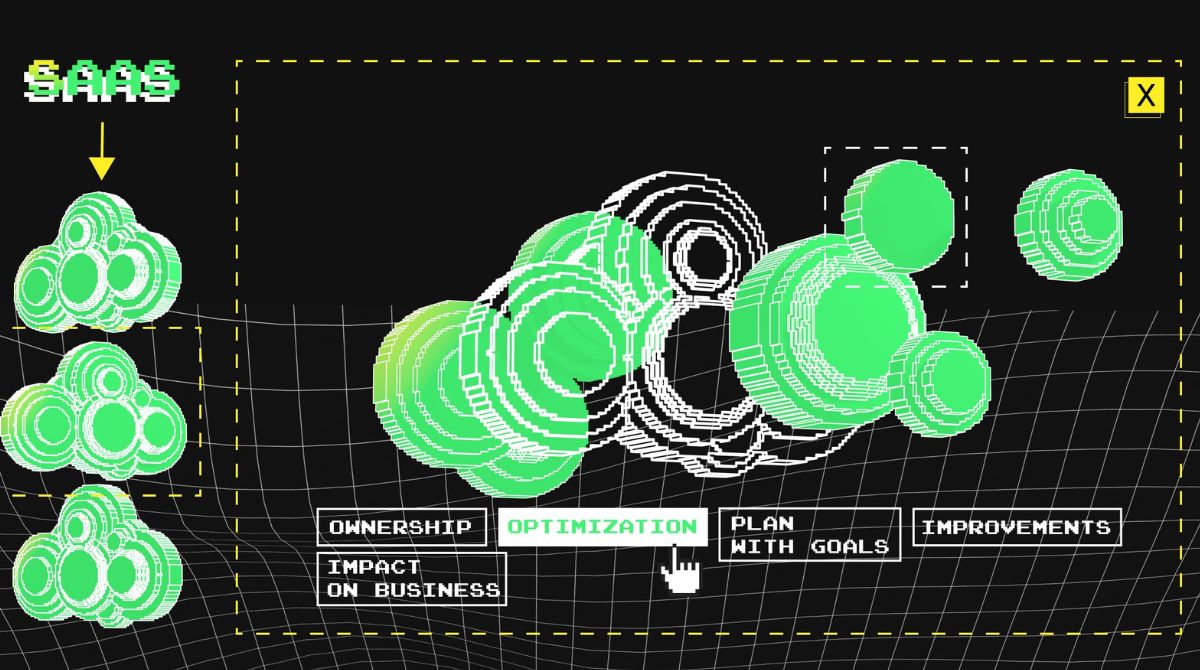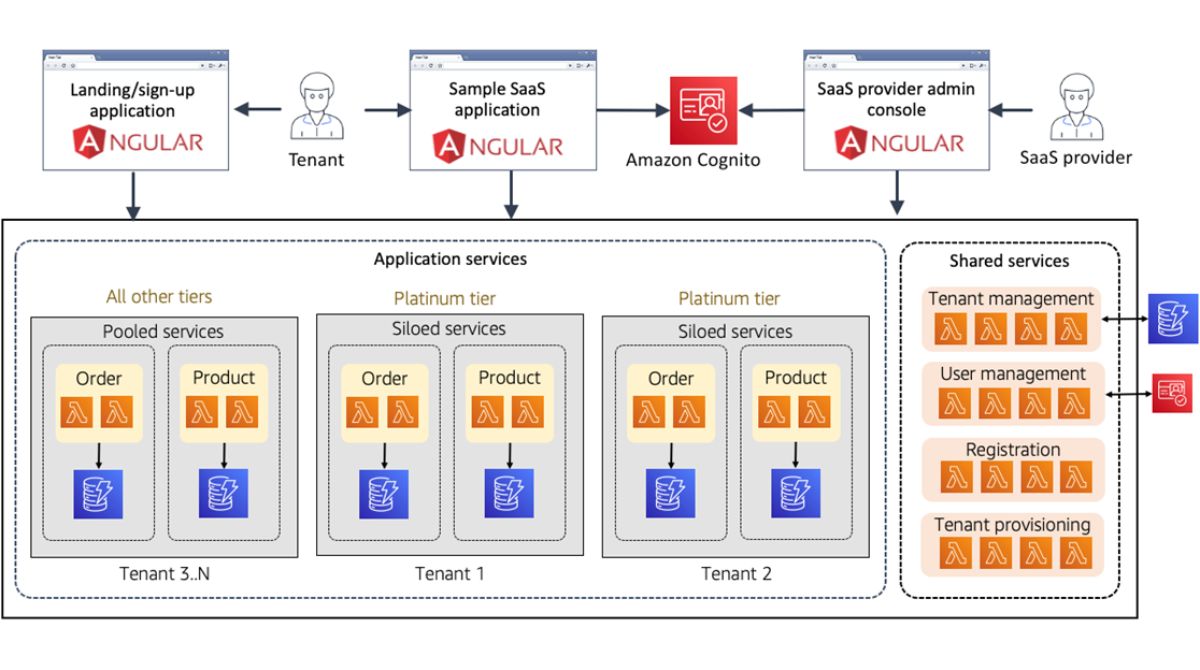Improved Efficiency and Productivity
One of the significant user benefits achieved by implementing SaaS application integration is improved efficiency and productivity throughout the organization. Integrating various software applications into a cohesive system streamlines processes, eliminates duplication of efforts, and reduces time-consuming manual tasks.
By integrating different applications, employees can access and share data seamlessly, without the need for manual data entry or transferring information from one system to another. This eliminates errors and delays, enabling employees to focus on more critical tasks that require their expertise.
SaaS application integration also allows for the automation of repetitive processes. For example, customer data entered into a CRM system can be automatically synced with an email marketing tool, enabling personalized and targeted communication. This automation saves time, reduces the risk of manual errors, and ensures consistent and timely communication with customers.
Furthermore, integrated applications provide a unified view of data, enabling employees to make informed decisions faster. With real-time data synchronization, they can access up-to-date information across different departments, improving collaboration and reducing the need for back-and-forth communication.
An integrated system also enhances productivity by eliminating the need for employees to switch between multiple applications and log in to different systems. With a single sign-on feature, employees can access all the necessary applications through a centralized portal, reducing downtime and increasing productivity.
Moreover, SaaS application integration allows for streamlined workflows and eliminates redundant processes. For example, integrating a CRM system with an order management system ensures that customer information is automatically populated when placing an order, eliminating the need for manual data entry. This not only saves time but also reduces the risk of errors.
Ultimately, improved efficiency and productivity lead to cost savings and better customer satisfaction. Employees can focus on value-added tasks, resulting in quicker response times, improved service delivery, and enhanced customer experiences. With SaaS application integration, organizations can optimize their operations, increase efficiency, and maximize productivity.
Streamlined Business Operations
Implementing SaaS application integration offers significant benefits in streamlining business operations. By integrating different software applications, organizations can create a unified ecosystem that connects various departments and processes, leading to improved efficiency and smoother workflows.
One of the key advantages of streamlined business operations is the seamless flow of information across different systems. Integrated applications enable data to be shared in real-time, eliminating the need for manual data entry and reducing the risk of errors. For example, when a customer places an order online, the integrated system can automatically update inventory levels, trigger a notification to the warehouse, and generate an invoice.
Streamlined operations also enable better visibility into business processes. With integrated applications, organizations can gather accurate data and generate comprehensive reports that provide insights into their operations. This allows for data-driven decision-making, identification of bottlenecks, and implementation of process improvements to enhance overall efficiency.
Furthermore, integrated systems facilitate end-to-end processes and accelerate the order fulfillment cycle. For instance, integrating an e-commerce platform with the inventory management system ensures that product availability is automatically updated, orders are processed efficiently, and customers receive timely notifications regarding their purchases.
Another advantage of streamlined business operations is the ability to automate repetitive tasks. Integrated applications can handle tasks such as data synchronization, report generation, and customer follow-ups, freeing up employees’ time to focus on more strategic activities. Automation reduces the risk of errors, improves speed, and enables scalability as the organization grows.
Moreover, streamlined operations enable better collaboration and communication among teams. Integrated systems provide a centralized platform where employees can access and share information, collaborate on projects, and track progress. This fosters a culture of teamwork, reduces miscommunication, and enhances efficiency in decision-making and problem-solving.
Ultimately, streamlined business operations result in cost savings and improved customer satisfaction. By eliminating manual processes, reducing errors, and optimizing workflows, organizations can operate more efficiently, reduce operational costs, and deliver products and services to customers more quickly and accurately.
Enhanced Data Accuracy and Integrity
SaaS application integration offers valuable benefits when it comes to enhancing data accuracy and integrity within an organization. By integrating various software applications, businesses can ensure that data is consistent, up-to-date, and reliable across different systems and departments.
Manual data entry is prone to errors, making data accuracy a crucial concern for organizations. SaaS application integration eliminates the need for manual data transfer and entry between different systems, reducing the risk of transcription errors and data inconsistencies. When data is integrated, updates made in one application are automatically reflected in others, ensuring that everyone has access to the most accurate and up-to-date information.
Furthermore, integrated systems enable data validation and enforce data integrity rules. Before data is stored or transferred to another system, it can be validated against predefined rules to ensure its accuracy and integrity. This helps prevent the ingestion of erroneous or incomplete data, maintaining data quality throughout the organization.
SaaS application integration also provides a centralized repository for data, eliminating silos and duplication of information. When data is stored in a single, integrated system, it becomes easier to maintain data consistency and ensure that all users are accessing the same, authoritative source. This promotes data accuracy and reduces confusion caused by disparate data sources.
In addition, integrated systems enable robust data synchronization capabilities. Changes made to data in one application are automatically propagated to others, ensuring that data remains consistent across the organization. For example, if a customer’s contact information is updated in the CRM system, the change will be automatically reflected in other connected systems such as the accounting or customer support applications.
Enhanced data accuracy and integrity also play a critical role in regulatory compliance. By integrating systems and ensuring data consistency, organizations can easily generate accurate reports and audits, eliminating the risk of non-compliance due to incorrect or incomplete data. This helps businesses maintain their reputation, avoid costly penalties, and build trust with stakeholders.
Ultimately, enhanced data accuracy and integrity lead to informed decision-making, improved operational efficiency, and better customer experiences. When organizations have accurate and reliable data at their disposal, they can make data-driven decisions confidently, optimize their processes, and provide personalized and consistent experiences to their customers.
Cost Reduction
SaaS application integration brings significant cost reduction benefits to organizations by streamlining processes, eliminating manual tasks, and optimizing resource allocation. By integrating various software applications, businesses can achieve efficiency gains that directly impact their bottom line.
One of the key cost reduction benefits of SaaS application integration is the elimination of redundant systems and processes. Integration allows businesses to consolidate their software applications, reducing licensing costs, maintenance fees, and the need for IT infrastructure. With a streamlined and integrated system, organizations can eliminate duplicate functionalities and optimize their software investments.
Furthermore, integration eliminates the need for manual data entry and data transfer between applications. This automation not only saves time but also reduces the risk of errors associated with manual handling of data. By minimizing errors, businesses can avoid costly mistakes, such as incorrect invoicing or shipment errors, which can result in customer dissatisfaction and financial losses.
In addition, integrated systems enable better resource allocation and utilization. With a centralized view of data and streamlined processes, organizations can identify inefficiencies and allocate resources more effectively. For example, by integrating the sales and inventory management systems, businesses can ensure optimal stock levels, reducing the risk of overstocking or stockouts and minimizing inventory holding costs.
Cost reduction is also achieved through improved productivity and operational efficiency. With integrated systems, employees can access information more quickly, collaborate seamlessly, and complete tasks more efficiently. This leads to time savings, increased productivity, and the ability to handle higher workloads without increasing staffing levels, resulting in significant cost savings.
SaaS application integration also enables organizations to leverage cloud-based solutions, reducing the need for on-premises infrastructure. Cloud computing offers scalability and flexibility, allowing businesses to scale their operations based on demand without the need for additional hardware or software investments. This leads to cost savings by eliminating the upfront capital expenditure and reducing ongoing maintenance and upgrade costs.
Moreover, by integrating different applications, organizations can better streamline their procurement processes. With integrated systems, businesses can track and manage vendor relationships, automate purchase orders, and optimize their procurement workflows. This improves vendor management, reduces manual procurement tasks, and enhances cost control and negotiation power.
Ultimately, by leveraging SaaS application integration to achieve cost reduction, organizations can allocate their resources more strategically, optimize their operations, and achieve a higher return on investment. This cost-effective approach allows businesses to drive efficiency, increase profitability, and remain competitive in today’s dynamic market.
Scalability and Flexibility
SaaS application integration provides organizations with the scalability and flexibility needed to adapt and grow in today’s dynamic business environment. By integrating different software applications, businesses can easily add or remove functionalities, scale their operations, and adapt to changing business needs.
One of the key benefits of SaaS application integration is the ability to seamlessly add new applications or functionalities as the organization expands or evolves. With integrated systems, businesses can easily integrate new software applications into the existing ecosystem, allowing for a smooth transition and minimal disruption to existing processes. This scalability enables organizations to quickly adopt new technologies, expand into new markets, or introduce new products and services.
Integrated systems also provide businesses with the flexibility to customize and tailor their processes based on specific requirements. By integrating different applications, organizations can select the best-in-class solutions that meet their unique needs and customize them to align with their workflows. This flexibility ensures that businesses can adapt their systems to support their operations and growth strategies, without being limited by rigid software solutions.
Furthermore, SaaS application integration enables organizations to have a centralized view of data and processes, regardless of the location or device being used. This flexibility allows employees to access and work with data from anywhere, at any time, using any authorized device. Cloud-based integration solutions also provide real-time data synchronization, ensuring that everyone has access to the most up-to-date information, regardless of their location.
Integrated systems also allow for better collaboration and communication among teams, regardless of their physical location. With integrated applications, employees can easily share information, collaborate on projects, and work together in real time. This flexibility in collaboration enhances teamwork, accelerates decision-making, and improves overall productivity.
Moreover, scalable and flexible systems enable businesses to respond quickly to market demands and customer needs. With integrated systems, organizations have the agility to adapt their processes, allocate resources effectively, and meet changing customer expectations. For example, during peak demand periods, businesses can scale up their operations by easily integrating additional resources or applications, ensuring that they can meet customer demands and maintain service levels.
Ultimately, the scalability and flexibility offered by SaaS application integration empower organizations to innovate, grow, and stay ahead of the competition. By seamlessly integrating and adapting software applications, businesses can efficiently scale their operations, customize their processes, and respond to dynamic market conditions, ensuring long-term success and sustainability.
Improved Collaboration and Communication
SaaS application integration brings significant benefits to organizations in terms of improved collaboration and communication across teams and departments. By integrating different software applications, businesses can break down information silos, foster collaboration, and enhance communication channels.
Integrated systems provide a centralized platform where employees can access and share information seamlessly. This collaboration hub allows for efficient and effective collaboration, promoting teamwork and knowledge sharing. With integrated applications, employees can collaborate on projects, share documents, and exchange information in real time, regardless of their physical location or the applications they are using.
Furthermore, integrated systems enable cross-departmental collaboration, breaking down silos and facilitating communication between different teams. For example, integrating the customer relationship management (CRM) system with the sales order management system allows sales representatives to access customer information, order history, and pricing details in real time, giving them the information they need to provide better customer service.
Integrated systems also enable improved communication with customers. By integrating customer support systems with the CRM system, organizations can provide a seamless experience for customers. Support agents have access to customer data and interaction history, enabling them to provide personalized and efficient support. This integration streamlines communication channels and ensures a consistent experience for customers across different touchpoints.
In addition, integrated systems enhance communication by automating notifications and alerts. When data is integrated, systems can be configured to send automated notifications to relevant parties based on predefined triggers or events. For example, an integrated system can automatically send an email notification to the sales team when a new lead is captured in the CRM system.
Integrated systems also improve communication through real-time data synchronization. With an integrated ecosystem, teams can access and work with the most up-to-date information, ensuring that decisions and actions are based on accurate and timely data. This eliminates the need for manual data sharing and reduces the risk of miscommunication caused by outdated or inconsistent information.
Moreover, integrated systems facilitate better communication with external stakeholders, such as suppliers and partners. By integrating systems, organizations can improve the flow of information, streamline processes, and enhance collaboration with external parties. This leads to stronger relationships, improved efficiency in supply chains, and better overall business outcomes.
Ultimately, improved collaboration and communication pave the way for enhanced teamwork, streamlined processes, and better business outcomes. By breaking down silos, integrating systems, and fostering effective communication channels, organizations can create a collaborative and connected environment that drives productivity, innovation, and success.

























